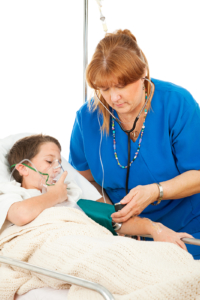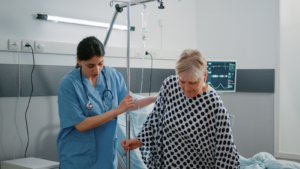Congress Newsletter 2022
Non-pharmacological methods for anxiolysis and analgesia in children
Session 05S1, Today Sunday 5 June, 0930-1030H Room Amber 7
This three-part session on Sunday morning looks at how personalised pre-operative medicine, distraction techniques and digital aids can be used as non-pharmacological methods for anxiolysis and analgesia in children.
The first talk will be given by Dr Daniel Stocki, Tel Aviv Sourasky Medical Center, Tel Aviv, Israel. “When confronted with an anxious patient prior to surgery, or postoperative anxiety and pain, we automatically turn our minds to which pharmacological intervention would be most effective in alleviating anxiety and pain,” he explains. “Pharmacological interventions are effective and easy for us to administer and require no or minimal cooperation from our patients. They are however not always effective and not free of unwanted effects.”
Anxiety is a mental state which affects our body responses. Pain is a subjective unpleasant experience. “By defining anxiety and pain as such, we should be able to use our strongest tool, the brain, to effectively influence both states,” says Dr Stocki. “Learning and practising coping skills, education and implementing tools based on physical sensation, make up effective tools that are safe and immediately available to manage both pain and anxiety.”
Both distraction techniques and digital aids will be covered in the second two parts of the session, given by Dr Johan Berghmans, Department of Anesthesiology, ZiekenhuisNetwerkAntwerpen, Antwerp, Belgium, and Department Anesthesiology UGent, Belgium. He will give a brief overview of the different forms of effective distraction techniques in the context of non-pharmacological methods for anxiolysis and analgesia in children.
“Distraction techniques are an effective method and relevant in alleviating pain and anxiety in many procedures,” says Dr Berghmans. “This second part of the presentation will be about digital aids like fully immersive virtual reality, interactive video games, iPads, and iPhones, which are a relatively new field driven by rapid technological advancements with minimal adverse effects and high levels of satisfaction and acceptability.”
He will discuss how these advancements should be further explored but up to now their superiority over non-digital distractors has not been established. Dr Berghmans concludes: “It is important to consider all the available resources and not disregard simple games or the expert storyteller as a distraction method. Finally, these distraction techniques should ideally be incorporated into family-centred care and caregivers, as well as parents, should be encouraged to use them.”
Read More of our special newsletter covering our congress.











